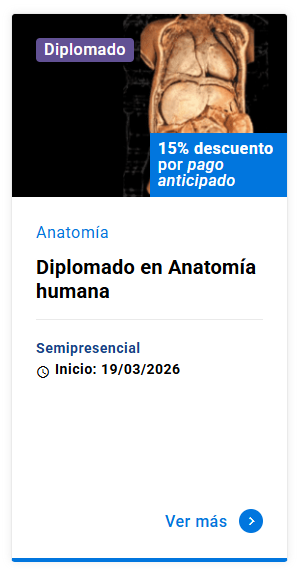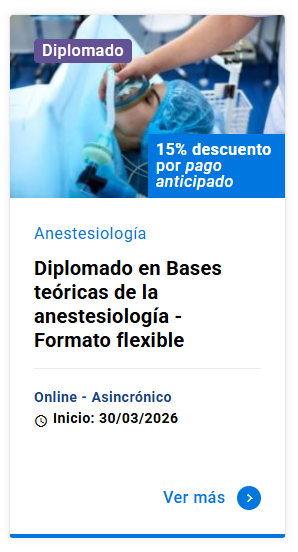Generalidades y manejo inicial del shock
DOI:
https://doi.org/10.11565/arsmed.v44i1.1375Palabras clave:
shock, indiferenciado, sepsis, emergencia, urgencia, evaluación primariaResumen
El shock es un síndrome multifactorial que requiere un enfrentamiento sistematizado para su identificación, clasificación y tratamiento adecuado.
A pesar de los avances en medicina, distintos estudios y series clínicas indican que la mortalidad puede llegar hasta un 50%. La única variable que ha mostrado ser consistente en disminuir la mortalidad, independiente de la causa del shock, es su reconocimiento y manejo precoz.
Este manuscrito pretende dar un marco teórico acerca de la presentación del paciente en shock en el servicio de urgencia, describir sus principales características y orientar el estudio y tratamientos tiempo-dependientes desde su primera evaluación por el equipo médico.
Inicia con la exposición de casos clínicos relevantes al tema. Luego revisa la fisiopatología del fenómeno del shock y sus subtipos. Finalmente ofrece herramientas para su evaluación y tratamiento en el servicio de Urgencia.
Descargas
Citas
Angus DC, Barnato AE, Bell D, Bellomo R, Chong CR, Coats TJ, Davies A, Delaney A, Harrison DA, Holdgate A, Howe B, Huang DT, Iwashyna T, Kellum JA, Peake SL, Pike F, Reade MC, Rowan KM, Singer M, Webb SA, Weissfeld LA, Yealy DM & Young JD. (2015). A systematic review and meta-analysis of early goal-directed therapy for septic shock: the ARISE, ProCESS & ProMISe Investigators. Intensive Care Medicine 41, 1549-1560. DOI: https://doi.org/10.1007/s00134-015-3822-1
Bentzer P, Griesdale M, Boyd J, MacLean K, Sirounis D & Ayas N. (2016). Will this hemodynamically unstable patient respond to a bolus of intravenous fluids?. Journal of American Medical Association; JAMA 316, 1298-1309. DOI: https://doi.org/10.1001/jama.2016.12310
Bruhn A, Pairumani R & Hernández G. (2011). Manejo del Paciente en shock Séptico. Revista Médica Clínica las Condes 22, 293-301. DOI: https://doi.org/10.1016/S0716-8640(11)70429-1
Caironi P, Tognoni G, Masson S, Fumagalli R, Pesenti A, Romero M, Fanizza C, Caspani L, Faenza S, Grasselli G, Iapichino G, Antonelli M, Parrini V, Fiore G, Latini R, Gattinoni L & ALBIOS Study Investigators. (2014). Albumin replacement in patients with severe sepsis or septic shock. The New England Journal of Medicine 370, 1412-1421. DOI: https://doi.org/10.1056/NEJMoa1305727
Cecconi M, De Backer D, Antonelli M, Beale R, Bakker J, Hofer C, Jaeschke R, Mebazaa A, Pinsky MR, Teboul JL, Vincent JL & Rhodes A (2014). Consensus on circulatory shock and hemodinamic monitoring. Task force of the European Society of Intensive Care Medicine. Intensive Care Medicine 40, 1795-1815. DOI: https://doi.org/10.1007/s00134-014-3525-z
Davis J, Howel J. & Nelson B. (2005). Allergies And Anaphylaxis: Analyzing The Spectrum Of Clinical Manifestations. Emergency Medicine Practice 7, 10.
Dutton R. (2012). Haemostatic Resuscitation. British Journal of Anaesthesia 109, 39–46. DOI: https://doi.org/10.1093/bja/aes389
Finfer S, Bellomo R, Boyce N, French J, Myburgh J, Norton R & SAFE Study Investigators. (2004). A comparison of Albumin and saline for fluid resuscitation in the intensive care unit. New England Journal of Medicine 350, 2247-2256. DOI: https://doi.org/10.1056/NEJMoa040232
Goldberg S. & Liu P. (2015). Undifferentiated shock. Critical Decisions in Emergency Medicine. 29, 3.
Hernández G., Bruhn A., Castro R. & Regueira T. (2012). The holistic view o perfusion monitoring in septic shock. Current Opinion in Critical Care 18, 00. DOI: https://doi.org/10.1097/MCC.0b013e3283532c08
Hochman JS, Sleeper LA, Webb JG, Sanborn TA, White HD, Talley JD, Buller CE, Jacobs AK, Slater JN, Col J, McKinlay SM & LeJemtel TH (1999). Early Revascularization in Acute Myocardial Infarction Complicated by Cardiogenic Shock. The New England Journal of Medicine 341, 625-634. DOI: https://doi.org/10.1056/NEJM199908263410901
Holcomb JB, Tilley BC, Baraniuk S, Fox EE, Wade CE, Podbielski JM, del Junco DJ, Brasel KJ, Bulger EM, Callcut RA, Cohen MJ, Cotton BA, Fabian TC, Inaba K, Kerby JD, Muskat P, O'Keeffe T, Rizoli S, Robinson BR, Scalea TM, Schreiber MA, Stein DM, Weinberg JA, Callum JL, Hess JR, Matijevic N, Miller CN, Pittet JF, Hoyt DB, Pearson GD, Leroux B, van Belle G & PROPPR Study Group.(2015). Transfusion of Plasma, Platelets, and Red Blood Cells in a 1:1:1 vs a 1:1:2 Ratio and Mortality in Patients With Severe Trauma: The PROPPR Randomized Clinical Trial. Journal of American Medical Association; JAMA 313, 471-482. DOI: https://doi.org/10.1001/jama.2015.12
Holmes C. & Walley K. (2003). The evaluation and managment of shock. Clinics in chest Medicine 24, 775-779. DOI: https://doi.org/10.1016/S0272-5231(03)00107-2
Hollenberg S. (2009). Inotrope and Vasopressor Therapy of Septic shock. Critical Care Clinics 25, 781–802. DOI: https://doi.org/10.1016/j.ccc.2009.07.003
Magder S. (2012). Bench-to-bedside review: An approach to hemodynamic monitoring – Guyton at the bedside. Critical Care 16,236. DOI: https://doi.org/10.1186/cc11395
Monnet X., Marik P. & Teboul J.L. (2015). Passive leg raising for predicting fluid responsiveness: a systematic review and meta-analisys. Intensive Care Medicine 42, 1935-1947. DOI: https://doi.org/10.1007/s00134-015-4134-1
Perera P., Mailhot T., Riley D. & Mandavia D. (2010). The RUSH Exam: Rapid Ultrasound in shock in the evaluation of the critically ill. Emergency Medicine Clinics of North America 28, 29-56. DOI: https://doi.org/10.1016/j.emc.2009.09.010
Regueira T. & Andresen M. (2010). Manipulación del transporte y consumo de oxígeno en la sepsis. Revista Médica de Chile 138, 233-242. DOI: https://doi.org/10.4067/S0034-98872010000200014
Richards J. & Wilcox S. (2014). Diagnosis and Management of shock In the Emergency Department. Emergency Medicine Practice 16, 3.
Rhodes A, Evans LE, Alhazzani W, Levy MM, Antonelli M, Ferrer R, Kumar A, Sevransky JE, Sprung CL, Nunnally ME, Rochwerg B, Rubenfeld GD, Angus DC, Annane D, Beale RJ, Bellinghan GJ, Bernard GR, Chiche JD, Coopersmith C, De Backer DP, French CJ, Fujishima S, Gerlach H, Hidalgo JL, Hollenberg SM, Jones AE, Karnad DR, Kleinpell RM, Koh Y, Lisboa TC, Machado FR, Marini JJ, Marshall JC, Mazuski JE, McIntyre LA, McLean AS, Mehta S, Moreno RP, Myburgh J, Navalesi P, Nishida O, Osborn TM, Perner A, Plunkett CM, Ranieri M, Schorr CA, Seckel MA, Seymour CW, Shieh L, Shukri KA, Simpson SQ, Singer M, Thompson BT, Townsend SR, Van der Poll T, Vincent JL, Wiersinga WJ,
Rivers E, Nguyen B, Havstad S, Ressler J, Muzzin A, Knoblich B, Peterson E, Tomlanovich M & Early Goal-Directed Therapy Collaborative Group (2001). Early goal-directed therapy in the treatment of severe sepsis and septic shock. New England Journal of Medicine 345, 19. DOI: https://doi.org/10.1056/NEJMoa010307
Sprung CL, Annane D, Keh D, Moreno R, Singer M, Freivogel K, Weiss YG, Benbenishty J, Kalenka A, Forst H, Laterre PF, Reinhart K, Cuthbertson BH, Payen D, Briegel J & CORTICUS Study Group. (2008). Hidrocortisone Therapy for patients with Septic shock. New England Journal of Medicine 358, 111-124. DOI: https://doi.org/10.1056/NEJMoa071366
Vincent JL, Ince C. & Bakker J. (2012). Circulatory shock – an update: A tribute to professor Max Harry Weil. Critical Care 16, 239. DOI: https://doi.org/10.1186/cc11510
Vincent JL. & De Backer D, (2013). Circulatory shock. Critical Care Medicine. New England Journal of Medicine 369, 1726-34. DOI: https://doi.org/10.1056/NEJMra1208943
Zimmerman JL & Dellinger RP (2017). Surviving Sepsis Campaign: International Guidelines for Management of Sepsis and Septic shock: 2016. Intensive Care Medicine 43,304–377 DOI: https://doi.org/10.1007/s00134-017-4681-8
Descargas
Publicado
Cómo citar
Licencia
Derechos de autor 2019 ARS MEDICA Revista de Ciencias Médicas

Esta obra está bajo una licencia internacional Creative Commons Atribución-CompartirIgual 4.0.
Los autores/as conservan sus derechos de autor y garantizan a la revista el derecho de primera publicación de su obra, la que estará simultáneamente sujeta a la Licencia CC BY-SA 4.0 (Ver declaración de Acceso Abierto).







